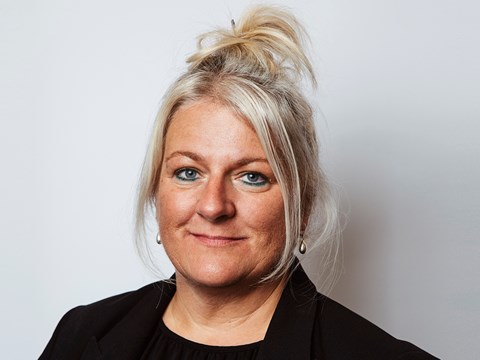Driving creativity: Why process might be the winning spell to unleash magic
11 Sep 2023
Many years ago, when I was working client side as a marketing director, I was intrigued by how one of my agencies seemed to have some kind of secret elixir to unlock that magic of small team collaboration, but at scale. Their work was consistently outstanding, effortlessly exceeding expectations (or so it seemed to me), with incredible attention to detail. It was like they had a magic formula.
So I asked if I could spend a couple of weeks with them - a mini-sabbatical, if you will - mucking in as one of them on another brand's work. Green lights all around. I was in and I was intriguingly surprised. A little shocked, actually.
I expected to come away with some kind of mysterious holy grail, a guardian of new secret knowledge… but the truth behind how they achieved it? They had the process nailed within an inch of its life. It wasn’t a creative, magical secret. It was the kind of rigorous, structured, formal process that creative marketers usually balk at.
We all know that there's magic in small, collaborative teams. There’s a reason why agile teams contain 6-8 people and why, when we talk about clarity and efficiency, we talk about smaller scales, finding root causes, listening more than speaking, the value of preparation and asking the right questions early on.
But while this spark of brilliance is hugely powerful, it’s often so much harder to achieve at scale, in complex organisations with more people, teams and sign-off points involved. Is that an inevitable reality or something we should all be pushing back on with a rallying cry?
As brands and marketing functions grow, a fine line develops between the magic of informal collaboration and the ‘mystery’ of the need for rigour and process. How should we approach this, to ensure our people can continue to achieve their very best work and tap into that collaborative magic, even at scale?
The tipping point
Once a marketing function has reached a certain size, that sense of “oooh, well the magic just sort of ‘happens’” isn’t sustainable. A tipping point emerges: for everyone to do their roles well, you need more clarity, more specialism, more accountability, and more formality to roles. But you need to do this in the right way if you’re going to preserve that wondrous, impressive magic we all want to create, and be judged commercially against.
The most important thing is that organisations need to be forward-thinking, and proactive about this issue. You need to actively cultivate a sense that achieving the balance between magic and process is not something being done to you but is something being done BY US.
The best case in point: in-housing…
Arguably, nowhere is this issue better exemplified than in the case of in-house teams. In-housing continues to be extremely popular, with 52% of UK businesses having in-house teams, and many intending to in house more with consideration for media, social, creative etc. At the start of this journey the ‘magic’ I’m talking about comes very naturally; small studios or teams organically and informally create dynamics that lead to fantastic creativity, and outstanding results.
But as an in-house function starts to scale, and has aspirations for growth, and to move up the ‘tiers’ (see in-house agency leaders club for a better understanding of this), you have to start introducing planning, rigour, processes, governance, and all kinds of other words that seemingly strike fear into small creative teams.
The question of ‘how do we keep the magic alive’ should be asked before this happens, and should be woven into the process of scaling from the start.
But there’s more…
This is only a piece of the puzzle, though. There are two tensions to address here - that of the in-house team itself scaling up, but then the additional consideration of any external partners and suppliers that make up part of your marketing ecosystem too, as well as different products, different internal teams - data, insight, operations etc. The challenge of ‘maintaining the magic’ applies when connecting all these aspects together.
This then makes the question of getting the ‘fine line’ and balance right across the whole ecosystem even more crucial and needs focus and some magic in its own right.
What matters for magic?
So what should we be thinking about? What issues really matter? What can we do to effectively get this balance right?
At the heart of this is one big question: ‘how can we keep things small, active, agile, collaborative and magical, while working at scale and in big ways?’ The only way to do this is by being crystal clear and asking the right questions at the right time.
There’s not a one-size-fits-all approach, but I think we can cut through all the noise of specific issues like governance, process and structure to one core element of this: ways of working.
Here are some top questions or considerations:
- Ask the HOW questions: talk about how stuff gets done; ask about blocks and barriers; elevate the smallest of niggles quickly so they can be openly solved quickly and efficiently, drive a continuous improvement culture.
- Ensure everyone has access to “easy to get” visually interesting process maps and decisions trees; focus on pragmatic solutions and strawmans, not detailed complex flow diagrams that no one will ever use, or need a SAS-style microscopic glasses to read.
- Focus on repetitive issues for more detailed analysis and testing radical changes to resolve; consider new roles that can help eliminate blocks and drains at the first whiff that an issue is not a one off.
- Identify tools and technologies that can be used to facilitate efficient marketing operations; talk to other leads just ahead of where you are now to pre-empt scale issues.
- Set clear expectations; communicate what you expect from everyone, and set out the procedures you want them to follow. Be clear on the RACI for each project and collaboration needs (consult) vs co-operation (inform).
- Make sure knowledge isn’t hoarded: even if you have siloed teams working with specialist agencies, make sure everything is shared and goals are clear to both your internal and agency teams.
- Accept not all in-house or external agencies are equal: make an active choice between sessions everyone can attend and will get value form - speed briefings, for example, and which are the ones that need to be more bespoke sessions.
- Make sure your internal processes support collaboration: this applies to the whole business, not just the marketing department. Anyone who works with marketing – from sales to procurement – needs to know the magic you’re trying to achieve.
Final thoughts
Your WOW (because let’s call ‘ways of working’ something more interesting and less formal) and the ‘how’ are the big things to address here.
They’re the nuts, bolts, and keys to unlocking magic at scale, working with both in-house teams and agencies.
Process, rigour, and compliance might all feel like bad words in the context of creative collaboration. But when built in an inclusive, proactive, and collaborative way they can actually nurture creative and commercial magic.
There should be no mystery as to how you create magic, but so often there is, simply because the WOW (said deliberately now…) isn't talked about as much as the WHAT. Too often teams don’t talk about it; they shy away from it, and focus too much on now. And that's ok if what you are doing is working and you have no plans to scale.
But if you have ambitions to change, to grow, to expand, then please pause and have these conversations NOW. That's the way to protect future magic.
Want a chat to explore how we can help? Drop me a message on vgillan@aargroup.cu.uk. My WOW magic wand is at the ready. 😉
About The Author





